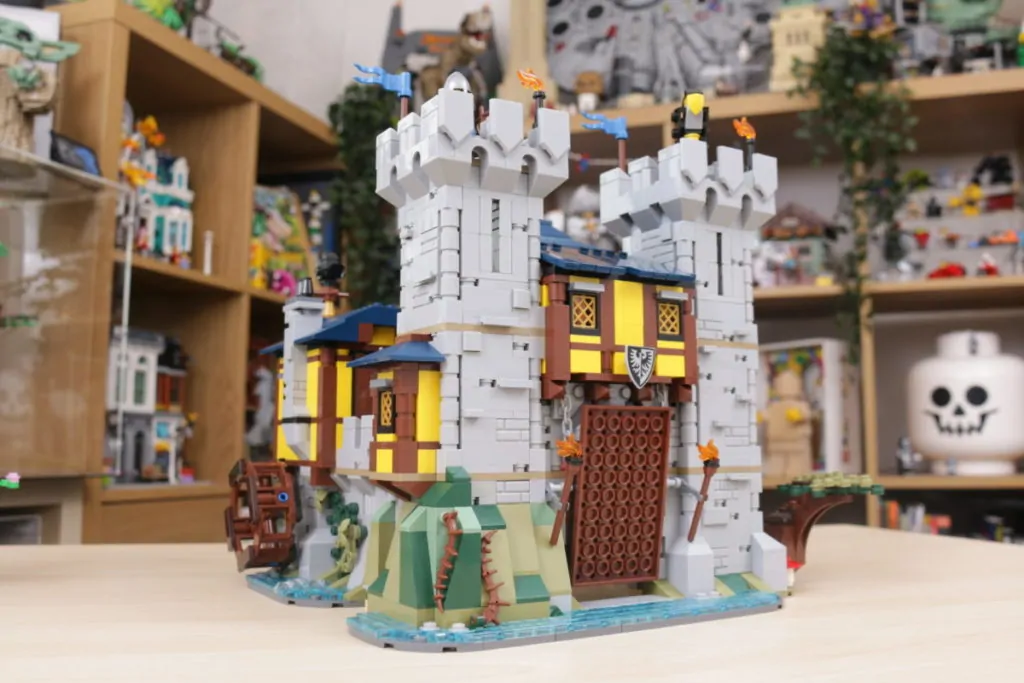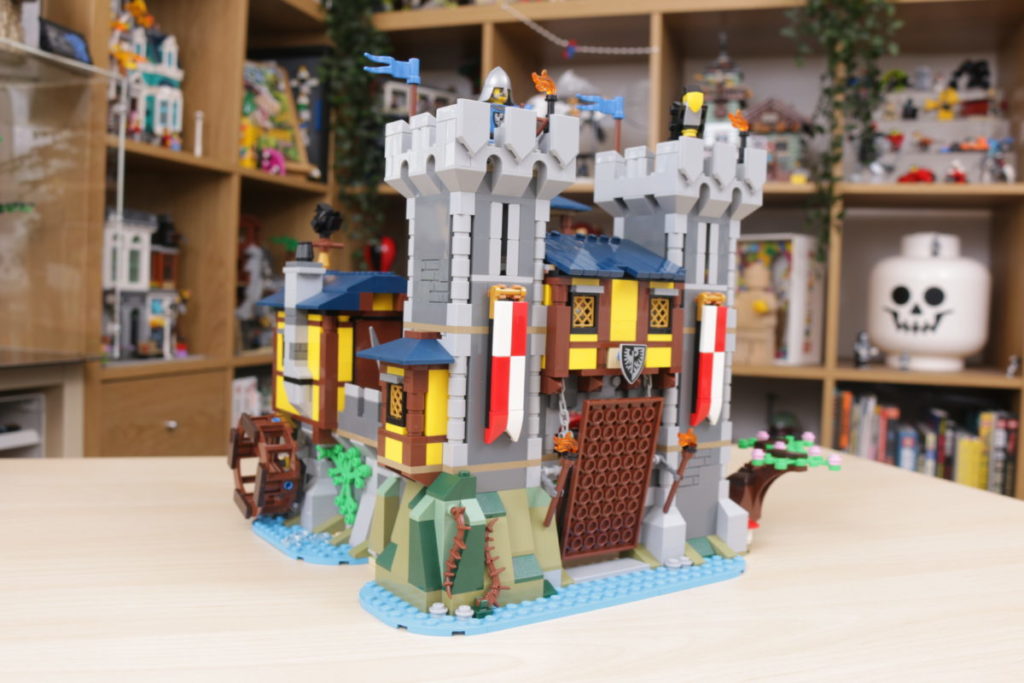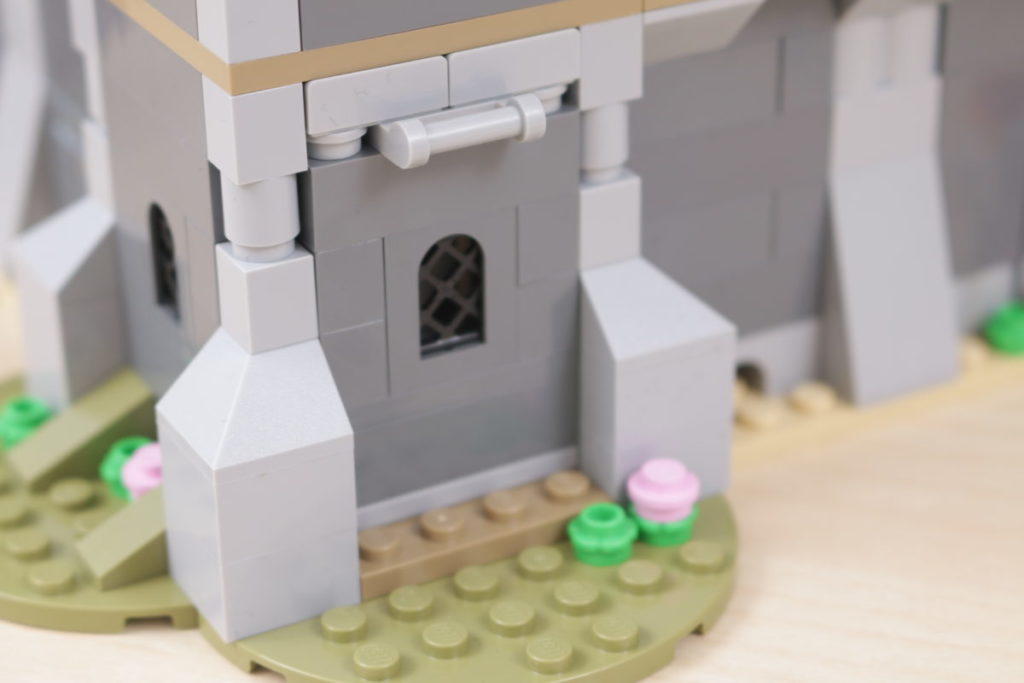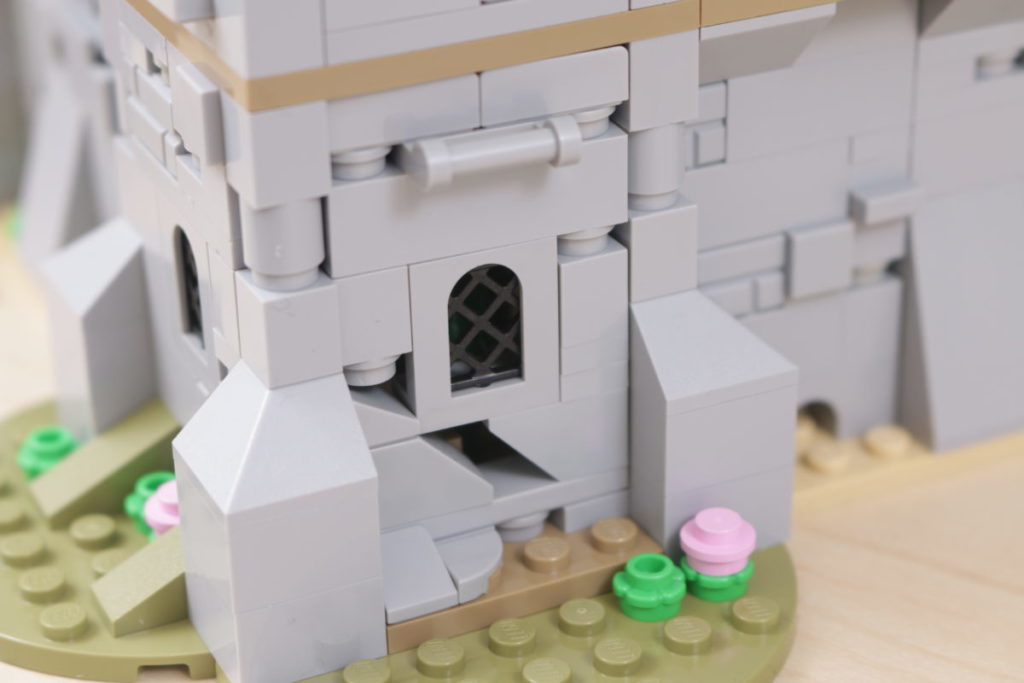How to improve LEGO Creator 3-in-1 31120 Medieval Castle
31120 Medieval Castle is a fundamentally great LEGO set and a welcome return to a classic theme – but there are some simple ways to make it even better…
31120 Medieval Castle is a set we have plenty of time for here at Brick Fanatics. As we wrote in our detailed review of the Creator 3-in-1 masterpiece, it’s a modern slice of nostalgia that takes a classic theme from yesteryear and combines it with modern parts and techniques for ‘practically perfect results’.
For what is possible within the challenging design remit of the Creator 3-in-1 theme (all the parts have to create one main model and then some of those parts need to be used again to build two other thematically-related models); working to a particular budget on the number of pieces included; following particular design rules around structural integrity and playability; and all to a predetermined and relatively young age recommendation (in this case 9+), 31120 Medieval Castle is a triumph.
For any number of criteria that could have tripped it up, it’s a fun and engaging set that all of us at Brick Fanatics who are pretending to be adults can’t stop talking about.

That being said, what if you could do away with the age recommendation on this set? And forget about the absolute necessity for structural integrity? And even – to a reasonable extent – overlook a budget cap? Is there a better version of 31120 Medieval Castle to build?
We’re talking with one eye very much on what the LEGO fan community has been delivering in the realm of castle building for years now. A quick glance across Instagram and Flickr will demonstrate just how many wonderful castle-related creations there are out there to inspire, and just what is possible without the restrictions official LEGO set designers face.
Removing those official LEGO design restrictions, maintaining the crux of what is a wonderful set and then applying some of the fun and very smart techniques on show in the fan community (some of which also sneak into more advanced LEGO sets themselves), how could we change – and maybe improve – 31120 Medieval Castle?
Disclaimer: we’re not going to go ‘full AFOL’ here. Even if we are stepping away from some of the guidelines that LEGO designers have to follow, we’re keeping this project accessible to a wider LEGO audience both in techniques demonstrated and potential budget required – maybe one calculated trip to the Pick & Build wall for a couple of large cups of bricks will get you what you need.
In the walls
31120 Medieval Castle is built with flat, generally smooth dark grey walls, with heavy accents of colour across the front thanks to the red-and-white banners and through other details such as the bright green tree, brightly coloured rooster and chickens, and the bright blue water.
From a play point of view there’s plenty to take in and enjoy, but from a display point of view, these are the areas that juniorise the set and make it a little too busy and flashy for what would otherwise be a battle-hardened fortress of a castle.
What we would like to do is ‘age up’ the model, and the simplest way to do that is to strip away the brighter colours and throw texture into the walls. There are a number of techniques to achieve this, including some already in use in the set.
Colour variation
One technique to add flavour and variety to a build like a castle is to vary the colours, and this is actually something that 31120 Medieval Castle already does very well. Where a LEGO castle from 30 years ago would have been the one, bland light grey all over and only broken up by the occasional printed part, changing out some of the light grey today for dark grey and earthy colours like olive green gives the build a sense of texture and life, without having to move away from an otherwise simple build technique.
The way the LEGO design teams across all themes use colour is generally underrated, partly because for how well they do it you don’t notice it. It may be in place on sets like 31120 Medieval Castle to help mask otherwise simple build techniques, but it is a fine skill in and of itself that for any builder – starting out or at a more advanced level – can add another level to your creation.
As it’s already in place, though, and given we want to minimise the colour where at the moment there is a bit too much of it, this technique is not for us on this occasion.
Masonry bricks
Swapping out bricks for masonry bricks is a quick and remarkably effective way to add texture to a castle wall. Random placing of masonry bricks throughout an otherwise flat wall can instantly introduce a bit of detail and is a pretty easy technique to apply. The trick is to not go overboard in how many you use (so no need to fill up three large cups at the Pick & Build wall – we see you), nor use them in straight lines one next to another or one on top of another.
It may seem like a basic technique and again it’s already in use on 31120 Medieval Castle, but you’ll just as easily find it in practice in sets such as the remarkably-designed 21325 Medieval Blacksmith, for one.
For our intentions with this project, the masonry brick is a very useful LEGO piece, but we will be swapping out the dark grey for light grey pieces, to match our palette choice.
SNOT
Studs Not On Top building refers to any technique where you change the direction of the build, and for castle builders, it’s a further way to add different effects to a wall. Bricks with studs on their side (and Erling bricks) can build up an entire wall or be more sporadically placed between regular bricks, before tiles or plates are applied to the studs on their side, to create an effect full of potential and variety and well worth playing around with.
This technique can be used sparingly to create deviations in a wall’s appearance or used uniformly to create a completely different build appearance. Used more selectively, it can add points of interest to a castle build when used for corners, bases, archways or sporadic areas of a large wall face. Some small examples of this can also be found in 21325 Medieval Blacksmith across stone corners and small archways over doors.
SNOT techniques can also be used to create embrasures (window-ish openings of various shapes and sizes). For what we generally see as a simpler build, 31120 Medieval Castle demonstrates this to good effect.
Taking SNOT techniques even further can build up walls of several layers, with cracked outer surfaces revealing bare bricks underneath. Combining this with a clever use of colour can create some highly-realistic LEGO creations. For our intentions, a sparing use of some of the simpler SNOT techniques will help bring random deviations in the surface of the walls.
Plates and tiles
Plates, rounded plates, jumper plates and tiles can create a weathered or uneven build effect across an otherwise plain wall. Stacking plates on top of each other and every now and again including a rounded plate creates these little ‘chipped’ areas in the wall.
Similar in construction but to create more of a stepped effect to a wall, jumper plates and tiles can be stacked between plates so as to jut out of the wall, again for an uneven effect and a bit more character. These can be used sparingly to create points of focus and wear to an otherwise large and uniform wall, or they can be used exclusively to create a very uneven structure.
Swapping out bricks for stacks of plates, rounded plates and jumper plates will really help add to the weatherworn look of our redesigned 31120 Medieval Castle.
Slopes
Swapping out bricks for slopes and inverted slopes (varied in height thanks to plates) can create simpler – albeit larger – cracks in walls. Clever placement of these pieces within a castle wall can help tell a story, from damage potentially suffered in battle, to a tree forcing its way through the structure.
With the tree and breakaway wall features in 31120 Medieval Castle, there are at least two great opportunities to use this basic technique to good effect.
Final model

Taking a mix of the above techniques and using them to build replacement walls all around 31120 Medieval Castle creates the ‘aged up’, weathered effect we are after. As a process, we worked wall by wall carefully prising apart areas of the model to remove sections of wall at a time. Once unbuilt, we put together our own version of the same wall and put it back into the model in place of what we had removed.
We used 1×2 bricks (part no. 3004), 1×2 masonry bricks (part no. 98283), jumper plates (part no. 15573), 1×1 and 1×2 tiles (part nos. 3070b and 3069b), 1×1, 1×2, 1×3 and 1×4 plates (part nos. 3024, 3023, 3623 and 3710), 1×1 rounded plates (part no. 4073), 1×2 plates with a door rail (part no. 23028) and 1×1 Headlight bricks (part no. 4070), which are also known as Erling bricks.
From a budget perspective, these are all easy-to-source parts on BrickLink, from LEGO.com and in the LEGO store’s Pick & Build wall. Quantity needed depends on how many of which parts you intend to use and which techniques take your fancy, but a rough number equivalent to filling two large Pick & Build cups should do the trick.
Our unbuild and rebuild approach was applied all the way around the model to effectively remove all dark grey bricks and replace them with our choice of light grey bricks. This colour choice was so as to help reduce the harshness of colour throughout the model. Building in this way and in just the one colour allows the details that we are working into the walls to really stand out, at the same time as not overwhelming the eye with too much visual competition.
How you apply any combination of the above discussed techniques to your castle build is purely down to taste, but we have tried through random and uneven application to sparingly inject some of the desired effects across the walls, without overdoing it. For example, if each wall was made up of just 1×1 plates and every other plate used was a rounded plate, then it would lose the randomness of a chipped effect and actually begin to create a uniform pattern of its own, and ultimately end up being reflective of a different real-world wall construction technique. If your parts collection limits your use of certain parts, embrace that. Restraint in building is a technique in and of itself.
Alongside changing the walls, we also played around with some of the other details in 31120 Medieval Castle to minimise their brightness. Specifically, where we have left the yellow, brown and blue housing aspects to the castle in place (they really call back to Classic Castle and are a delightful focus of the model), we have replaced the tree leaves with earthier tones; integrated the pull-away prison wall a little more into its surrounding structure; replaced the rooster, chickens and bright target with a wooden target with arrows and bow; and replaced the bright blue water plates with dark grey equivalents and added some trans-light blue tiles on top to better create a water effect (something you may have seen in the three LEGO NINJAGO City sets, too).
With consideration to everything we have changed, it was important in this modification of 31120 Medieval Castle to maintain the general framework of the original set, so as to still enjoy the very many elements of design that make it work so well.
The purpose of this project is to demonstrate the relative simplicity of some highly effective techniques, but there are also plenty more challenging techniques that can be applied to any castle build that you may wish to try. The best place to start digging for those is on Instagram and Flickr, where any number of amateur LEGO artists are creating some really impressive works.
In the meantime, we hope that our modified version of 31120 Medieval Castle inspires you to try something similar yourself. Are there other sets out there that deserve similar treatment? Let us know in the comments below (yes, we have a comments section now!).
Support the work that we do at Brick Fanatics by purchasing your LEGO through one of our affiliate links. It helps us to create content like this! Thank you!
Author Profile
- As one half of Tiro Media Ltd, I mix a passion for print and digital media production with a deep love of LEGO and can often be found on these pages eulogising about LEGO Batman, digging deeper into the LEGO Group’s inner workings, or just complaining about the price of the latest LEGO Star Wars set. Make a great impression when you meet me in person by praising EXO-FORCE as the greatest LEGO theme of all time. Follow me on Twitter @RobPaton or drop me an email at [email protected].
Latest entries
Builds16/07/2024How to build LEGO space terrain: part I
June 2024 sets12/07/2024LEGO City 60409 Yellow Mobile Construction Crane review
June 2024 sets11/07/2024LEGO City 60426 Jungle Explorer Off-Road Truck review
June 2024 sets10/07/2024LEGO Batman 76274 Batman with the Batmobile vs. Harley Quinn and Mr. Freeze review
























































I bought this castle this past weekend. Something always bugged me, just didn’t look right. Looking at this article, I realized that the yellow accent walls are what was bugging me. Once I started building, I loved the base & moat. I had just finished up building Medieval Marketplace into 2x size models, and had a few medium blue bricks left over. I decided to see how they looked. Much better! I ordered a bunch more 1×1 and 1×2 medium blue off Bricklink so I can finish and build 1 or 2 more of these sets into a bigger castle.
Great article and I’ll order some parts to try something similar. One point is that the PLATE 1X2 WITH SLIDE is 32028 not 23028
Great work. I bought two of the castle sets with the intent of building bigger and better. I will take on board some of your ideas and techniques and will definitely remove those red and white banners which are just plain wrong. I will also get rid of the pirate minifigure (what self-respecting mediaeval peasant would wear a striped vest?).
Ever tried building a mirror image of a set? When I was desperate for a new modular building I bought a second pet store. I constructed it in mirror image and changed the signs so that they read “BEST PETS” across the two builds placed side by side. The interior can easily be modified to create an archway joint the two retail spaces and now I have a section for dogs and a separate one for cats.
The walls are great, as well as the water, but now there is too much contrast between the detailed walls and the very low poly looking terrain parts.
Rob, you’re a star. It’s my 70th birthday today and guess what my hubby bought me. I’ve already worked out I have enough parts in my general stash to also make the alternative builds to incorporate into the main set but now you’ve given me further ideas.
Lego wasn’t about when I was a kid, I built with Bayko but I’m making up for my deprived youth now. Just need a bigger house!
Hope you had a good birthday and that you find the space for all that LEGO. We keep thinking we’ve run out of space at Brick Fanatics, but we almost always eventually find an extra bit of storage here or there…